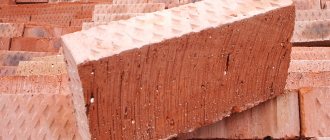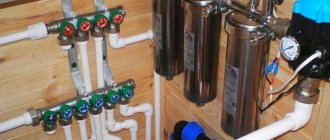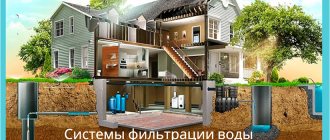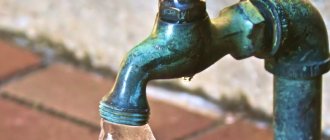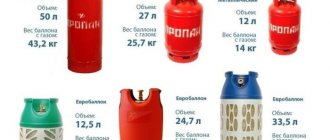It is difficult to call a cottage in which there is no water supply modern and comfortable for living. Walking with a bucket to a well or pump is something out of fairy tales or old grandmother's stories today. There must be running water in a private home. And you can do it yourself by organizing a water supply from the same well. The situation is even simpler when it is possible to connect to the village centralized network. In this case, it is enough to install only the internal part of the water supply system.
Water supply systems
Water supply to country houses is:
- centralized;
- decentralized.
In the first option, the water source is the water supply network common to the entire village. To connect a private home to it, you must contact the resource supply organization and obtain specifications for connection. The subsequent insertion into the centralized pipeline will be carried out by the installers of this company, and the distribution of the water supply through the residential building can be done independently.
Home water supply options
In the second option, water enters the house from a well, borehole or river. If such water intake is done on your own property, then you will not need to obtain permits or coordinate anything with government agencies. However, all issues of quality and compliance of the life-giving moisture entering the cottage fall on the shoulders of the home owner.
Design of polymer storage tanks
Plastic tanks for storing water resources come in various volumes (up to 10,000 liters) and shapes. They can be square, cylindrical, vertical and horizontal, flat, angular.
Tanks are produced in two designs. The first is ordinary containers with smooth walls and a sealed lid equipped with a breathing valve. Any storage tank requires access to air, otherwise it will be flattened by atmospheric pressure when emptied. Conventional tanks are designed for storing water resources, extracting them with an electric pump or using a self-installed tap.
The second option is special tanks for use in individual water supply systems. They have four holes in the body on one side - two at the top and two at the bottom. One top and one bottom hole are equipped with a 1-inch male thread. These bends are used to connect the inlet and outlet pipelines of the water main to them.
There is also a hole with a diameter of 28 mm at the top. It is usually used to organize emergency drainage by connecting a pipeline directed to the street or to the sewer.
It is worth noting that any installer can use the top threaded pipe and hole at his discretion. For example, in a 28 mm cutout you can install a float valve that turns off the water supply when the tank is filled, and a 1-inch threaded pipe can be used for emergency draining.
The 3/4 inch pipe at the bottom is used to empty the tank. The need for this arises when dirt accumulates at the bottom of the container in the form of sand and clay deposits, products of decomposition of metal oxides.
There is a different design for storage tanks for underground installation than the traditional one. Since the soil pressure on the tank walls is quite high, they are equipped with stiffeners. In addition, they have a high neck, which allows them to be immersed underground to a depth below the freezing point.
Rice. 4 Storage tank for water supply - examples of use in the home
Plumbing system in a private house
The plumbing system of a private house consists of an external and an internal part. The first includes a street water supply from a water intake or village network and directly a well or well with a pump (if this is a decentralized autonomous option). The second includes the cold water and hot water pipelines located in the house, as well as filters, pumps, fittings and taps.
External part of the water supply system of a private house
Types of wells
There are only 2 main subspecies. In the first case, you can drill an artesian, which has a depth of up to 150 meters, or a regular one, “into the sand.” The second one does not go deeper than 15-50 meters.
They also differ in the time they can be used. The former last up to 50 years, and the latter usually no more than 20 years.
How to develop a plumbing diagram
In order for everything to work out correctly in the end, before installing the water supply it is necessary to carefully work out the layout of its installation on the street and its wiring in the cottage. If this project is done correctly, it will avoid many problems during installation work and subsequent operation of the assembled water supply system.
Water supply scheme for a private house
When developing such a water supply scheme, the following is calculated:
- number of water supply points in the house;
- the need and number of collectors;
- pump power and water heater capacity;
- pipe sizes;
- characteristics of shut-off valves.
Plus, you select the option of pipe routing (collector or sequential) and the placement of all elements of the water supply system in a private house. At first glance, it is easier to install the same electrical wiring in an apartment or a ventilation system. However, both have their own nuances. And even with the slightest mistakes, there will be many problems in all cases.
Features of pipe selection
Pipes for home water supply can be made of plastic, steel, copper or metal-plastic. Copper will cost the most. But pipelines made from it are not subject to corrosion and deformation during heating (cooling), and they are also not afraid of impurities in water and water hammer.
The easiest way to install plastic options, however, high and low temperatures are strictly contraindicated for them. It is recommended to choose plastic for installation inside the house, and choose steel for the street. Steel pipes are more difficult to connect (welding is required). But they are more reliable, although they are susceptible to rust.
The internal diameter of the pipes is selected based on the estimated volume of water consumption by plumbing fixtures connected to a specific section of the water supply system. In this case, a tubular product with an internal cross-section of 25 mm is capable of flowing about 30 l/min, and with a cross-section of 32 mm – about 50 l/min. Typically, these two sizes are most often chosen for installing an in-house plumbing system. If you take pipes of a smaller diameter, they will make noise, since to increase their throughput you will have to increase the water pressure.
Types of pipes for water supply
To install an external section of water supply with your own hands, they are usually taken from a pipe with thermal insulation with a cross-section of 32 mm. This pipeline will lie in the ground, so special attention must be paid to its insulation. He shouldn't freeze in the winter.
DHW
- What devices can be used to heat water?
| Image | Description |
| A double-circuit gas boiler or gas water heater is attractive due to the low cost of the thermal energy it produces: its kilowatt hour costs only 50-70 kopecks. The disadvantage of the solution is the relatively low accuracy of water temperature control in younger models. In addition, main gas is not available everywhere. |
| A flow-through electric heater is compact and more than inexpensive, but it creates a significant load on the wiring: even younger models consume at least 3.5 kW. |
| An electric boiler provides stable hot water temperature with moderate power consumption (from 1 to 3 kW). Its main disadvantage is heat loss through the tank insulation: even in the absence of water consumption, 2-3 kilowatt-hours of electricity per day are spent just to maintain its stable temperature. |
| An indirect heating boiler is the most universal solution. It can be used with any heating boiler. Its heat exchanger is connected in parallel to the heating circuit. |
| Solar collectors are in demand primarily in warm and sunny regions of the country. In a day, a collector with an area of 2 square meters can generate up to 10 kWh of absolutely free heat. |
Recommendations for system installation
Installing water supply in a cottage in seven steps:
- Marking pipe routing, as well as installation locations for equipment and plumbing.
- Making holes in the walls for the pipelines to be laid.
- Connecting pipes using fittings or welding.
- Connecting shut-off valves.
- Installation of a water heater (boiler) and pumps with their connection to the assembled water supply system.
- Installation of plumbing.
- Starting the water and checking for leaks.
It is recommended to leave about 15–20 mm of empty space between the wall and the pipe. This will make it easier to repair the plumbing later if necessary. Also, each branch from the riser to the plumbing should have its own shut-off valve. This way, in the event of an emergency, you won’t have to turn off all the water in a private house, leaving household members completely without it for several hours or even a couple of days.
Types
The storage tank can be a container with sufficient internal volume, made of a material that is resistant to corrosion and safe for storing drinking water. The following materials are used:
- polyvinyl chloride;
- cross-linked high or low pressure polyethylene;
- polypropylene;
- stainless steel;
- steel coated with waterproof varnishes and ceramic coatings.
Plastic Tanks
Although galvanized steel is corrosion-resistant and waterproof, over time the protective layer of zinc can wear thin, especially at joints and welds.
By design there are:
- open containers that have a neck with or without a lid, but with sealed walls and bottom;
- closed, completely sealed membrane-type containers.
In the first case, everything is simple: the entire internal volume is filled with water and, if necessary, drained through a pipe fixed at the lowest point.
In the case of membrane storage tanks, the useful volume is at least a third less than the volume of the entire structure. Part of the volume is allocated under the air chamber, separated from the water using a durable elastic membrane. As the container fills with water, the membrane presses on the air chamber, creating excess pressure. When it is necessary to get water back, the valve opens and it enters the water supply system under the influence of accumulated pressure.
Connecting the pumping station
The pump or pumping station is installed in a caisson above the well, in the basement or in an outbuilding next to the well. This equipment is sensitive to severe frosts, so it should be located in an insulated, or even better, heated place.
Otherwise, there is a risk that the water inside it and nearby pipes will simply freeze. It is also possible to install a submersible pump directly into the well.
However, pressure switches and other automation will still require some kind of insulated space in the borehole head or room in the house for them to work correctly.
Schematic diagram of pumping station connection
Different fluid supply principles
You can install cold and hot water supply using one of 2 methods, which we will discuss below.
SF-mix manual up to 0.8 m3/h
AMETHYST - 02 M up to 2 cubic meters/day.
Aeration unit AS-1054 VO-90
"Blind" wiring
A dead end is installed at the last water intake mark - the liquid does not flow further. This is economical in terms of finances and space. At the extreme node, water will appear with a delay, and will flow into the tap only after it touches the plug.
Circulating closed system
The moisture here moves in circles all the time at the same temperature. The user will receive it immediately. This is best used for hot water supply to avoid serious temperature changes. Combined techniques can be used.
Hydraulic accumulator
To ensure that the pressure in the cottage’s autonomous water supply system is always constant, a hydraulic accumulator is included with the pump. It not only allows you to control the pressure in the taps, but also reduces wear on pumping equipment. The latter turns on less often. This only happens to fill the accumulator tank, and not every time you open the faucet valve in the kitchen.
If you don’t want to install a hydraulic accumulator, then you can get by with a regular storage tank of 0.5–1 cubic meter installed in the attic. This scheme allows you to do without complex and expensive equipment. At the same time, the pressure in the taps remains quite stable and constant.
Connection diagram for hydraulic accumulator
Video description
Video instructions on how to make pressurized water supply to your home and property through a membrane storage tank:
- Lower.
The container is installed on the floor or on the ground. Filled under pump pressure. Operation of the system also requires constant operation of the equipment. Which makes the water supply completely energy dependent.
This option is ideal for low well productivity. First, the tank is pumped at a speed limited by the parameters of the source, and then it is consumed according to consumer needs.
- Membrane accumulator.
This is another way to supply water from the lower location of the storage tank when the system is not equipped with a pump. Initially, water is drawn into the container from the well, and then enters and is distributed through the internal water supply under the influence of pressure generated by the membrane accumulator.
On a note! When placing a tank in an attic, tower, basement or any other unheated place, insulation and a suitable heating system are required - both inlet and outlet pipes and the body.
Water purification
If the quality of the water leaves much to be desired, then the water supply will have to be supplemented with a water purification system. At a minimum, you need a coarse filter. It will remove grains of sand and other large suspended particles from the water flow.
Additional filters are installed after the water has been analyzed for the chemical composition of the impurities present in it. If the content of iron or calcium is high, some treatment devices will be needed, and with increased hardness, others will be needed.
Water purification scheme in a private house
Volume of the tank
In the event of problems with the city water line and a water outage, repair work is usually completed within a day or two. However, accidents also happen on holidays, and in places where quick repairs are simply impossible, then you will have to wait much longer. The optimal supply of water for 2-3 days will be for using the toilet, maintaining personal hygiene and cooking.
For a family of three people, 100 liters per day is enough when using water in economy mode. One wash requires approximately 80 liters of water, more precisely you can find out in the passport for the washing machine. Same for the dishwasher.
It turns out that for 2-3 days when using household appliances, you need to look for a storage container with a volume of at least 500 liters, half a cubic meter.
However, there are a number of restrictions:
- The larger the volume of water and an open storage tank, the faster it will begin to become overgrown with sediment. It is not recommended to use containers larger than 200-250 liters in everyday life for long-term storage of water.
- The safety margin of the floor and load-bearing walls should be taken into account. The installation of the tank must be planned at the design stage of the house.
- When using an autonomous water supply, the volume of the storage tank, especially the membrane type, should not exceed the flow rate of the well. If this rule cannot be observed, then the pump must be protected from idle running.
Membrane-type storage tanks are limited in volume and are not able to release the entire supply of stored liquid. To form a reserve of over 300 liters, you will have to connect several tanks of smaller capacity in parallel to each other.
How not to break the law
To connect to a centralized water supply, you will have to prepare a whole bunch of documents and obtain technical conditions for connection. Without these pieces of paper you cannot cut into a pipe without permission. This will be discovered sooner or later and considerable fines will follow for arbitrariness and water consumption. Here, all connection issues should be resolved exclusively through the organization that controls the water utility.
Types of water sources for a private home
With a well and a borehole, the situation is radically different. There is no need to collect permit papers here. You can organize such a water intake on your site at any time. Moreover, it is not even necessary to invite specialists to dig a well. If you know exactly at what depth the water lies, then getting to it with your own hands if you have the skills to handle a shovel and follow simple rules will not be difficult.
Connection diagram for water supply to a private house with artesian water
The only limitation on the well is if it is made deep artesian. In this case, there is no way without permission. Such water withdrawal requires approval from government agencies. This sewerage installation in a private house can be done in any way without control from the authorities. This will not work with an artesian well.
All-season or summer option
There are two types of water supply for a summer cottage; it is selected depending on the needs of the home owner and the depth of the water.
Simplified or summer . Suitable for those who come to the country only from spring to autumn. You can do without capital and expensive water supply and make a stationary or collapsible version. Using a collapsible water supply system, communications can be laid along the surface, and then disassembled and stored for the winter. For stationary installation, the simplest technologies are also used, silicone or rubber pipes, which are buried at a slope to a depth of 1 m and remain there permanently; collapsible taps are installed at the required points. The only requirement is to drain water from the system pipes so that the pipeline is not damaged due to frost.
Such a system is suitable only for temporary residence; if you plan to relax at the dacha in winter, you need a more reliable water supply Source eltctricon.ru
Winter or all-season . The development of this option is more complex, time-consuming and costly. The slope of the relief and the maximum depth of soil freezing are taken into account. To supply water, a pump is used that can produce the optimal pressure; specialists can calculate this. The pipes are laid at an angle in the direction of groundwater at a depth of at least 20 cm below the freezing point of the ground. When using insulation, pipes can be located at a depth of up to 30 cm from the surface. Insulation is required for wells and pumps. It must be remembered that there are station models that can only be placed in a room with above-zero temperatures all year round.
It is important to remember that insulation is also required for the entire sewer system, which is located outside the heated premises.
Insulation is required not only for pipes, but also for the well Source stranapap.ru

